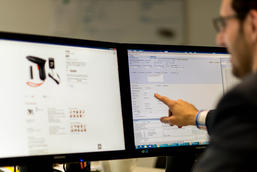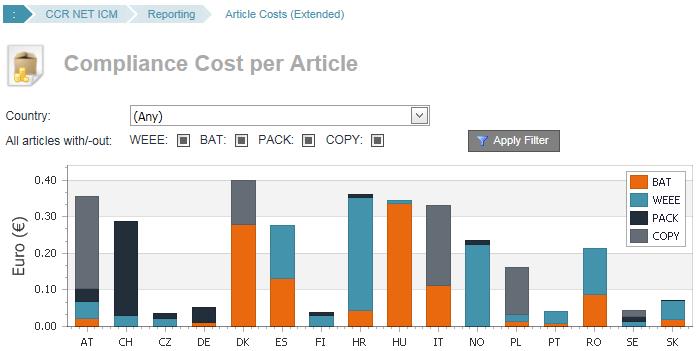
Full transparency for maximum protection: CCR documents the cost of environmental compliance for its customers, down to the penny and across borders
Electrical and electronic equipment (EEE), batteries, packaging – almost every product includes at least one component that is subject to regulations regarding the handling and calculation of its collection after use.
Until now, such calculations were often made using overhead rates, which are neither equitable nor transparent. The CCR “ECM manager” allows compliance costs and fulfillment to be calculated and documented precisely on a per item and market basis. For the first time, ECM enables CCR’s customers to compare their international compliance activities at the product level and actively manage the resulting costs.
Due to national differences in the implementation of EU directives regarding WEEE, batteries and packaging, which ascribe extended responsibility to manufacturers for their products and make them accountable for their collection, the number of applicable laws, methods of fulfillment and international authorities involved multiplies with each additional product or market. In recent years, CCR has worked with its customers to develop a system that largely automates and centralizes the fulfillment of international compliance requirements for entire product portfolios. That is particularly important to manufacturers that operate internationally.
CCR’s system is based on a specialized database that holds all the necessary information for environmental reporting, which is continuously updated to reflect changes to the applicable laws and new guidelines. For example, the database includes the information that solar-powered lamps are not subject to return in Slovakia because they do not have a mains power connection. Or that Austria differentiates between large and small electrical devices on the basis of weight and dimensions, while in Germany the product type determines which category a device is assigned to. The database also lists all the statutory collection systems along with the applicable prices. In addition to the three traditional areas that are subject to reporting, which are WEEE, batteries and packaging, the data also covers recently introduced international copyright regulations.
CCR ECM compares all of a customer’s product data with the international take-back obligations in order to determine the exact affected quantities for a company’s entire inventory and each new generation of products. Together with sales figures, reports regarding compliance schemes and for the authorities can be generated at the push of a button. All these processes take into account international sales channels, returns and volumes that are used internally.
Customers can access information about their environmental compliance status at any time via an online portal. Detailed cost breakdowns that customers can access using the portal are particularly important to multinationals since they can then be used to assign compliance costs to products directly. That achieves an entirely new level of quality as regards cost planning.
In terms of corporate governance and brand protection, transparency with respect to compliance fulfillment is a key advantage of environmental compliance management: all compliance activities can be traced and archived at any time and in real time.
The modular form of the CCR ECM system allows it to scale with the needs of the company’s customers and makes it easy for them to add further services from the broad spectrum offered by the Reverse Logistics Group. That gives the company’s customers access to complete solutions for the collection of their products, from consultation provided by the ECM team to returns at the point of sale.

Further information to the Environmental Compliance Management and the ECM Manager: click here >.
picture download >
